Introduction
If you’re running an enterprise website on WordPress, mastering SEO in 2025 isn’t optional; it’s essential.
As Google’s algorithms evolve and user expectations rise, enterprise websites require a streamlined, scalable SEO approach.
This is a three-part blog series created to help enterprise websites running on WordPress take their SEO to the next level.
In Part 1, we’re focusing on the essential groundwork every enterprise site needs to get right. Here’s what we’ll cover:
- How to set up key tracking and analytics tools like GA4, Google Search Console, GTM, and Site Kit
- What to look for in an SEO-friendly WordPress theme that won’t slow you down
- How to carry out enterprise-level keyword research and map keywords to your customer journey
- Ways to avoid keyword cannibalization so your pages don’t compete with each other
Checklist for Enterprise WordPress SEO Setup
Laying the groundwork is the first and most important step in any SEO strategy. Here’s how to configure your enterprise WordPress setup to support long-term growth and scalability.
1. Set Up Tracking & Analytics Tools
Data is the foundation of every successful SEO strategy. Without proper tracking, you’re making guesses, not decisions.
In 2025, data helps you understand what’s working, what needs improvement, and how users are engaging with your website.
Install Google Tag Manager (GTM)
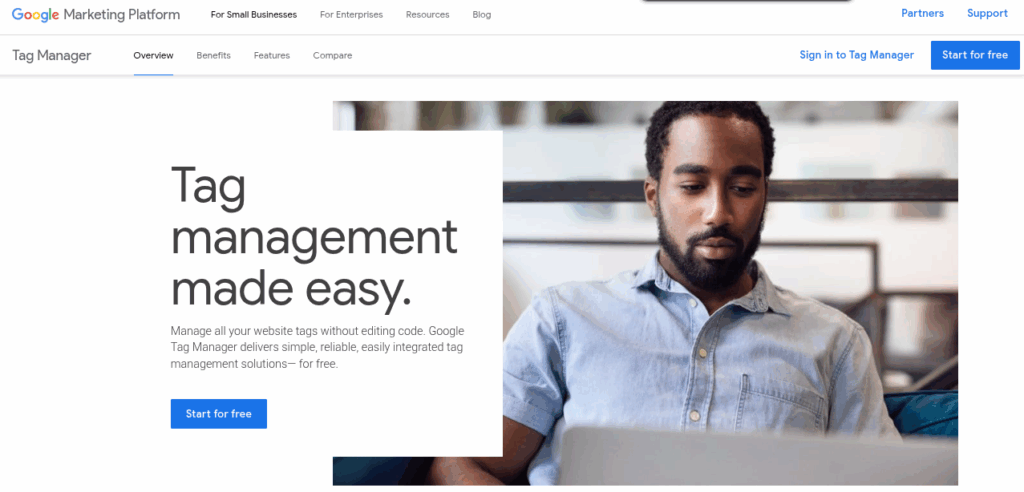
Screenshot 1: Google Tag Manager Platform
Google Tag Manager is a free tool that lets you manage all your tracking codes from one place. Whether you’re adding Google Analytics, heatmaps, or advertising pixels, GTM gives you control without touching your site’s core files each time.
Start by installing the GTM code. If you’re using WordPress, a plugin like GTM4WP simplifies the process.
For other platforms, you can manually insert the container snippets into your site’s header and body sections. Once installed, GTM becomes the central location to manage all your tracking tags.
Key Benefits:
- Centralizes all tracking and marketing tags in one place
- Allows non-developers to deploy or update tags without touching code
- Reduces errors caused by manual tag insertion
- Speeds up implementation for marketing and analytics teams
- Makes ongoing SEO campaigns easier to scale and test
Set Up Google Analytics 4 (GA4) for WordPress
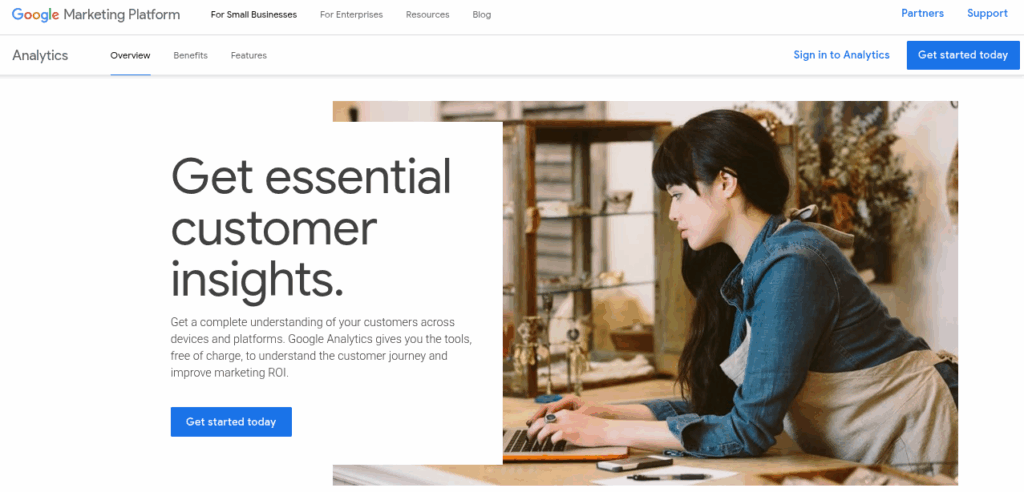
Screenshot 2: Setting Up Google Analytics 4 (GA4) for WordPress
Google Analytics 4 is Google’s latest analytics platform that offers event-based tracking, user-centric data, and advanced reporting capabilities designed for modern SEO and privacy standards.
You can create a GA4 property through your Google Analytics account. Setup can be done using the Google Site Kit plugin for WordPress or by adding the GA4 Measurement ID within Google Tag Manager.
Key Benefits:
- Provides deeper insights into user behavior across devices and platforms
- Tracks custom events such as scroll depth, video views, or clicks
- Supports privacy-friendly measurement aligned with 2025 standards
- Offers predictive metrics and enhanced engagement reports
- Helps identify high-performing pages and drop-off points
Configure Google Search Console (GSC)
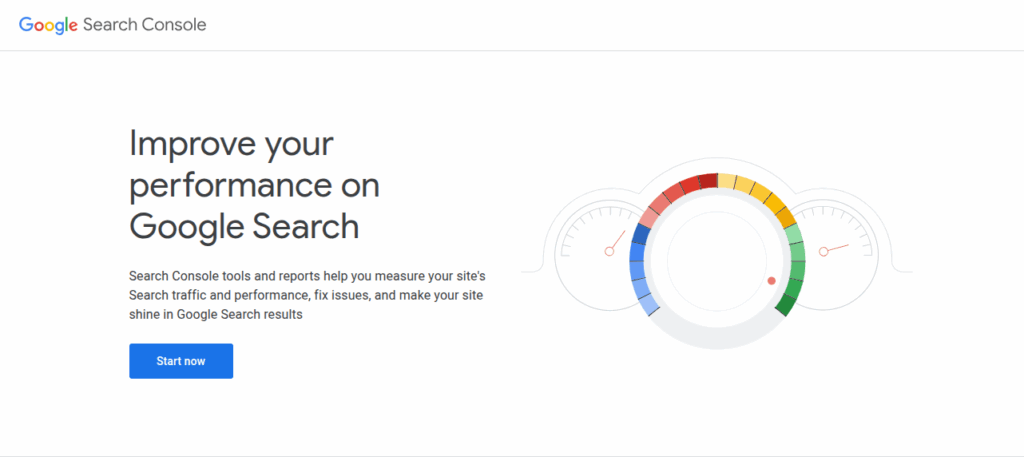
Screenshot 3: Configure Google Search Console (GSC)
Google Search Console provides visibility into how your website appears in Google Search, including performance metrics, indexing status, mobile usability, and technical SEO reports.
To access Search Console data, you must verify site ownership. This can be done using a DNS record, an HTML tag placed in your website header, or by uploading a verification file. Once verified, submit your XML sitemap to assist Google in indexing your pages efficiently.
Key Benefits:
- Shows which search queries drive traffic to your website
- Tracks clicks, impressions, and average keyword positions
- Identifies crawl errors, broken links, and mobile issues
- Helps you improve technical SEO and indexing accuracy
- Keeps your website aligned with Google’s latest guidelines
Link Search Console with Google Analytics 4
When you connect Google Search Console with GA4, you bring together two powerful perspectives. Search Console shows how people find your site through Google, while GA4 reveals what they do once they arrive.
In GA4’s Admin settings, you can link your Search Console property. This allows you to view search performance data like top queries, click-through rates, and impressions directly inside your analytics dashboard.
Key Benefits:
- Helps connect keyword performance with on-site behavior
- Allows cross-analysis of impressions, clicks, and engagement
- Improves SEO planning using unified, real-time data
Install and Configure an SEO Plugin
SEO plugins help manage technical and on-page SEO elements such as meta tags, schema, XML sitemaps, content readability, and more, all from your WordPress dashboard.
Yoast
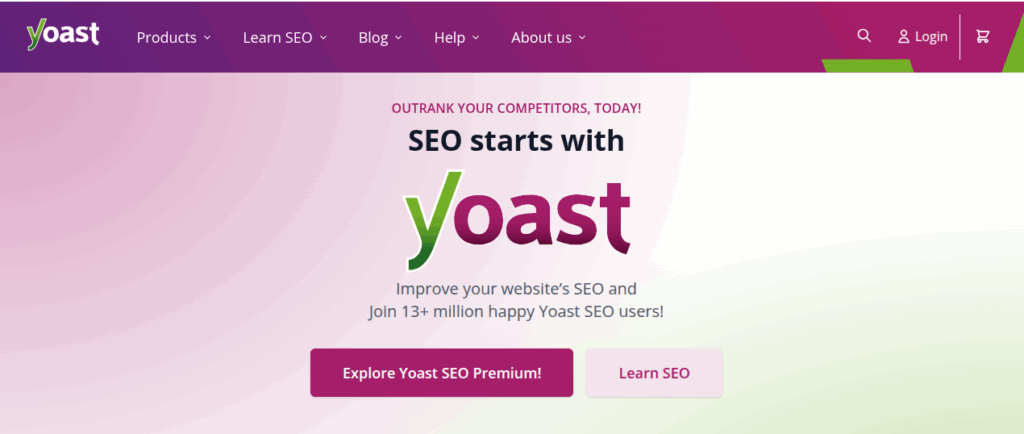
Screenshot 4: Yoast Plugin Website
A widely used plugin for beginners and professionals. It assists with metadata, content analysis, canonical URLs, XML sitemap creation, and breadcrumb configuration.
Key Benefits:
- Gives real-time feedback on SEO and readability as you write content (Paid version)
- Automatically generates XML sitemaps for better indexing
- Manages meta descriptions, canonical tags, and breadcrumbs
- Supports schema markup and integrates with WooCommerce and local SEO modules
- Easy for beginners to use with detailed guides and onboarding
RankMath

Screenshot 5: RankMath Plugin Website
A powerful and lightweight plugin designed for advanced on-page SEO, rich snippets, schema, and automation.
Key Benefits (Free and Paid Version):
- Allows you to optimize for multiple focus keywords in each post
- Includes a powerful schema generator with support for rich results
- Offers automatic image SEO, redirections, and 404 monitoring
- Compatible with WooCommerce and integrates SEO with product listings
- Built-in content AI tools help improve keyword targeting and structure
All-in-One SEO (AIOSEO)
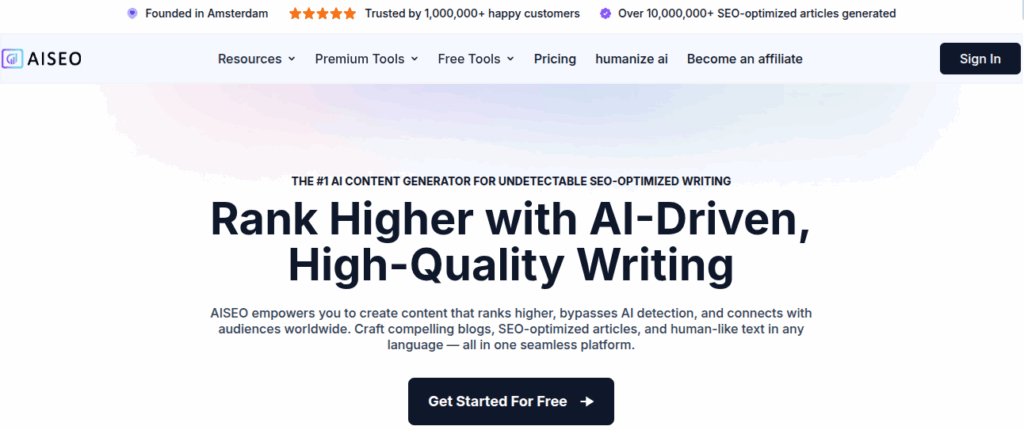
Screenshot 6: All-in-One SEO Plugin Website
AIOSEO is built for users who want more advanced control over technical SEO. It offers strong support for enterprise-level needs, especially for e-commerce and content-heavy websites.
Key Benefits:
- Helps identify SEO issues through a built-in site audit tool
- Supports advanced sitemaps for video, news, and WooCommerce products
- Allows detailed control over robots.txt, meta tags, and canonical settings
- Features local SEO tools for multi-location businesses
- Integrates with social media previews and schema for better sharing
Install and configure the Google Sitekit plugin.
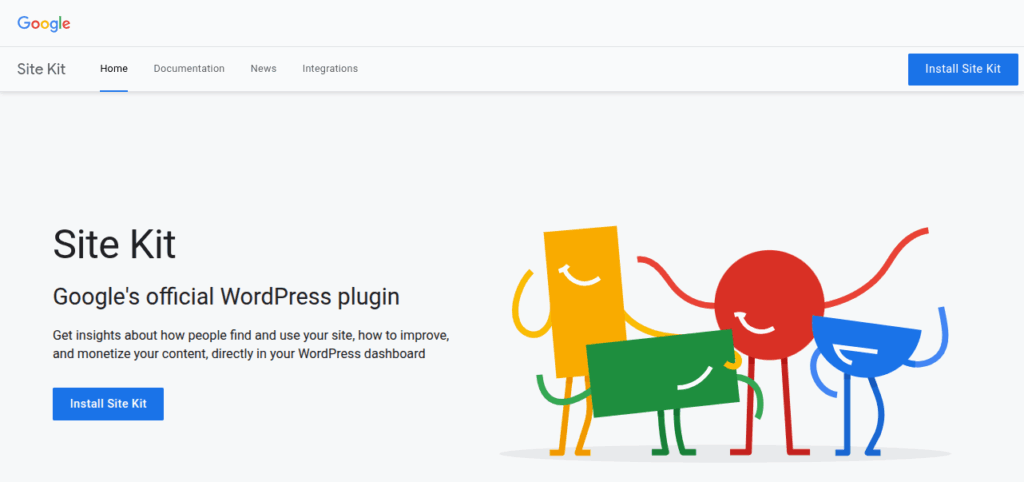
Screenshot 7: Google SiteKit Plugin For Wordpress
Sitekit: Site Kit provides a central dashboard to connect and view data from Google tools like Analytics, Search Console, PageSpeed Insights, and AdSense right from your WordPress admin panel.
Key Benefits:
- Shows real-time performance data for traffic and search visibility
- Helps monitor page speed and Core Web Vitals in one place
- Tracks earnings from Google AdSense without leaving your site
- Makes it easy to set up and verify Google services without code
- Ideal for beginners who want a simple overview of key metrics
2. Choose an SEO-Friendly WordPress Theme
Picking the right theme is more than just about design; it affects your site speed, mobile experience, SEO rankings, and how Google crawls your content.
Here’s what to check:
- Prioritize Site Speed: Select a theme that loads quickly, even before adding plugins, images, or additional design elements.
- Go for a Clean, Lightweight Code:
- Avoid themes that are cluttered with sliders, animations, pop-ups, or unnecessary built-in builders.
- Look for themes that use simple, efficient code with minimal CSS and JavaScript, as this will help Google crawl your site better and keep load times fast.
- Make Sure the Theme is Mobile-Responsive: Your theme should adjust automatically for phones, tablets, and desktops. As Google uses mobile-first indexing, this is non-negotiable.
- Start with a Vanilla theme: If you’re technically inclined or have developers on your team, it’s best to start with a vanilla, minimalist, and lightweight theme that’s optimized for performance. These themes offer a clean slate for custom development without unnecessary bloat.
- Secure & Regularly Updated: Go with a theme that’s actively maintained, updated frequently, and follows WordPress coding standards.
3. Perform Enterprise Keyword Research
If you want your website to rank and bring in the right audience, you need to target keywords that show both search demand and user intent.
Build a database of High-Intent & Long-Tail Keywords.
Start by creating a keyword list that focuses on two things:
- High-Intent Keywords: Terms that show the user is ready to take action (like buy, sign up, or inquire).
- Long-Tail Keywords: Longer search phrases (usually 4 or more words) that are more specific and often less competitive.
Look for keywords that balance volume and difficulty, which have
- Keywords with decent search volume and low-to-medium difficulty
- Terms that show clear search intent (informational, transactional, etc.)
- Niche or long-tail terms that align with your target audience
These keywords are
- Easier to rank due to lower keyword difficulty
- Increases the chance of attracting users farther along the buying journey
- Enables precise targeting for specialized topics
Analyze Competitor Keywords to Find Gaps
If your competitors are ranking for keywords that you’re not, you’re missing out on traffic. Here’s how you can leverage your competitor’s keywords:
- List Your Top Competitors: Start by making a list of your top competitors; these could be websites that consistently outrank you for important search terms in your industry.
- Use Keyword Research Tools: Tools like Ahrefs, SEMrush, or Ubersuggest to see the terms your competitors rank for, but you do not.
- Look for:
- Keywords where your competitor ranks in the top 10 or 20 positions
- Keywords relevant to your business, products, or services
- Long-tail or niche keywords with lower competition
Key benefits of competitor keyword analysis include
- Reveals untapped keyword opportunities
- Helps you target high-value niche terms
- Keeps you competitive in crowded verticals
4. Map keywords to buyer journey stages.
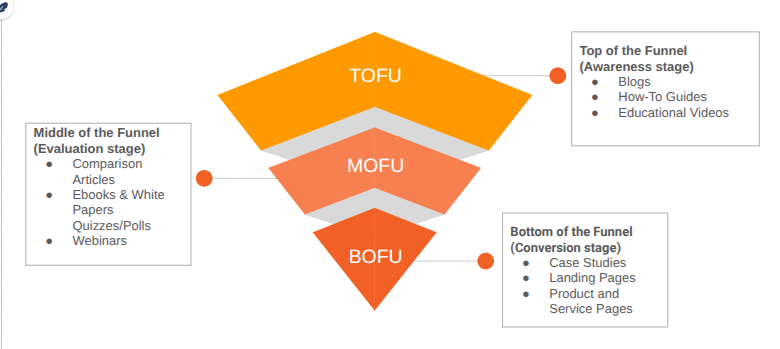
Figure 1: Content Funnel
Create funnel-aligned content
Top of the Funnel (TOFU): Awareness content, such as blogs, articles, how-to guides, and educational videos.
Middle of the Funnel: Comparative or educational content, e-books, white papers, quizzes, polls, or webinars.
Bottom of Funnel (BOFU): Product and service pages, keyword-based landing pages, location pages (to capture local search intent), or case studies.
Few Tips
- Build topic clusters and pillar pages: Organise related articles around a core page to strengthen topical relevance and increase chances of ranking for broader and related search queries.
- Apply Google’s E-E-A-T framework: Showcase expertise, real experience, author credibility, and trustworthiness—especially on product, health, or financial pages.
- Publish content consistently: Keep your site fresh and authoritative by maintaining a steady publishing schedule that aligns with your content strategy.
5. Setting Up Keyword Rank Tracking
Regularly monitor keyword performance in SERPs
Consistently tracking your keyword rankings in search engine results pages (SERPs) is essential for understanding how your content is performing over time.
Track rankings to:
- See which keywords are improving or dropping in rank.
- Spot seasonal changes, new opportunities, or sudden drops that may need attention.
- Measure the impact of your optimizations, content updates, and backlink strategies.
- Facilitates iterative improvements and strategy adjustments
Tools for rank tracking:
6. Avoid Keyword Cannibalization
Keyword cannibalization happens when two or more pages on the same site, including across subdomains, focus on the same or very similar search terms and intent.
When multiple pages compete for the same keyword:
- Google receives mixed signals, making it unclear which page should rank, often resulting in inconsistent SERPs
- SEO authority gets split between pages
- None of the competing pages may perform well because they’re all undercutting each other’s potential.
Here’s how to fix and avoid this problem:
- Map one primary keyword per page: Make sure each important keyword has just one target page.
- Review existing content: Go through your site and check for overlapping topics or duplicate targeting.
- Consolidate pages if needed: If two pages cover the same topic, combine them into one strong, SEO-optimized page.
- Improve internal linking: Link other related pages back to your main target page for that keyword.
Key benefits of avoiding Keyword Cannibalization
- Prevents dilution of page authority:
- When you have multiple pages targeting the same keyword, your internal links and backlinks get split across them.
- This weakens each page because none of them gets enough SEO power to rank well.
- By focusing all your links and authority on one main page, you give it the best chance to rank higher.
- Clarifies search engine signals on the page’s purpose:
- When Google sees multiple pages about the same keyword, it gets confused about which one is most relevant.
- By keeping one page per keyword, you send Google a clear signal: “This is the page that should rank for this topic.”
- Supports stronger ranking performance:
- When your SEO signals aren’t divided, your most relevant page performs better, drives more organic traffic, and gives users exactly what they’re looking for.
- This also increases your chances of getting clicks, leads, or conversions from searches.
Conclusion
Setting up your enterprise WordPress site for SEO isn’t about quick wins; it’s about building a strong, scalable foundation. In this first part, we’ve covered how to get your tracking tools in place, pick the right theme, plan your keyword strategy, and avoid pitfalls like keyword cannibalization.
With these basics sorted, your site is already on the right path to outperform competitors and stay aligned with SEO best practices.
Next up in Part 2, we’ll dive into the more advanced strategies like on-page SEO techniques, building a smart internal linking structure, and fine-tuning technical elements to help your site perform at its absolute best.
Published on Jun 27, 2025 | Updated on Jul 25, 2025